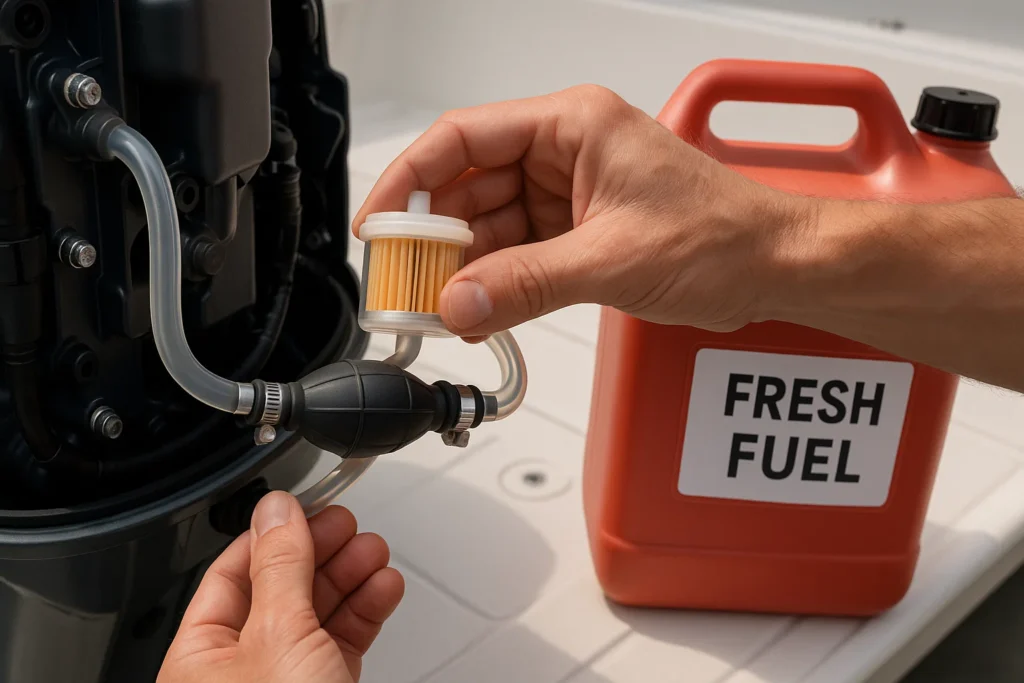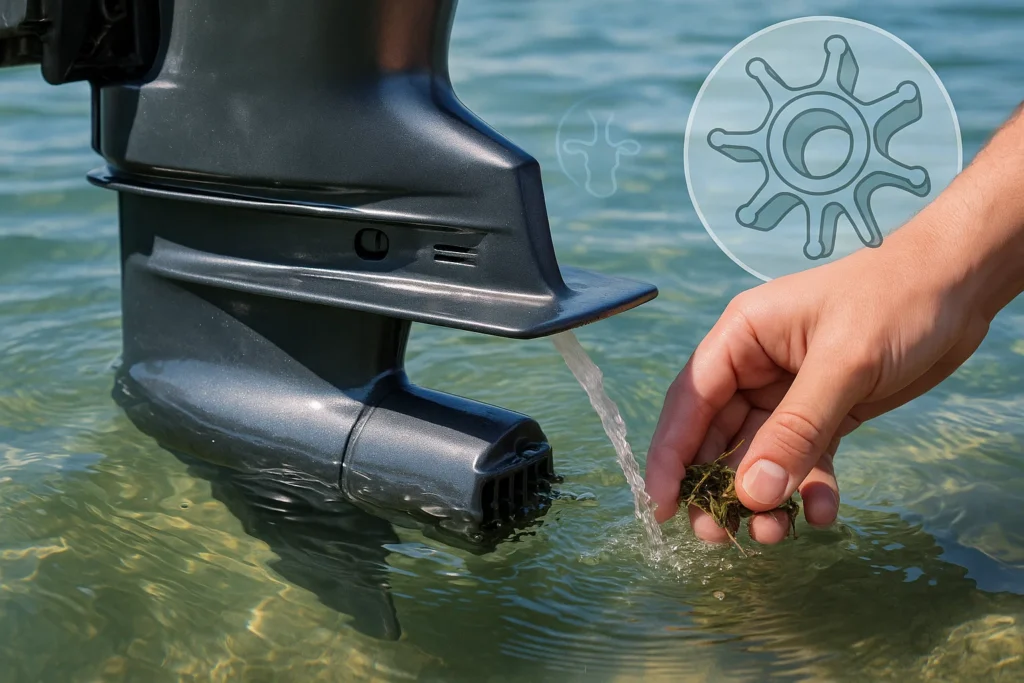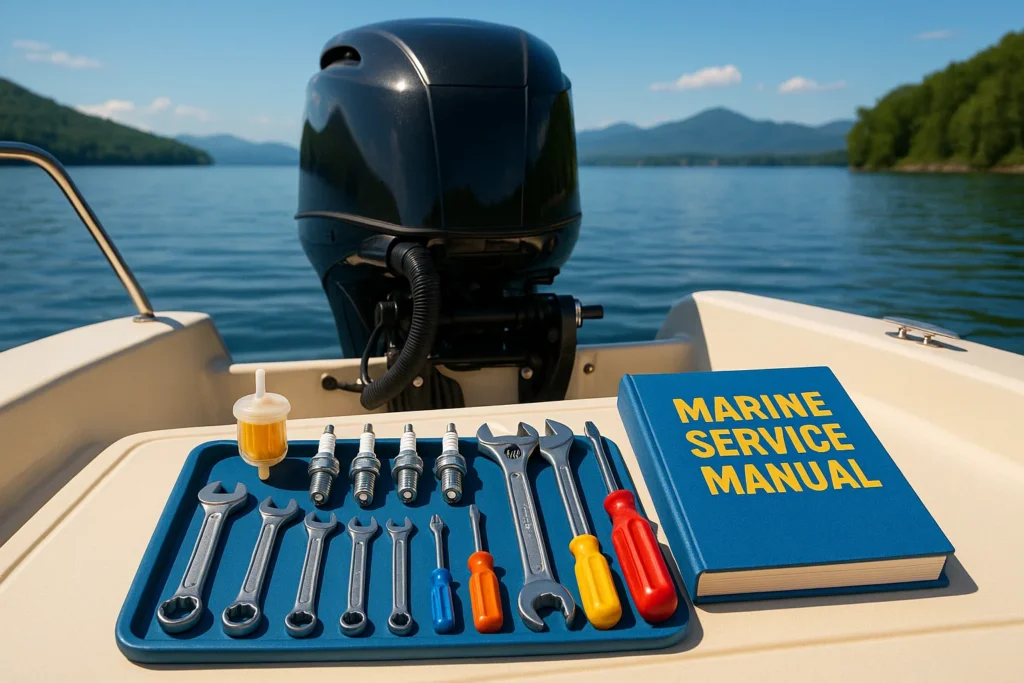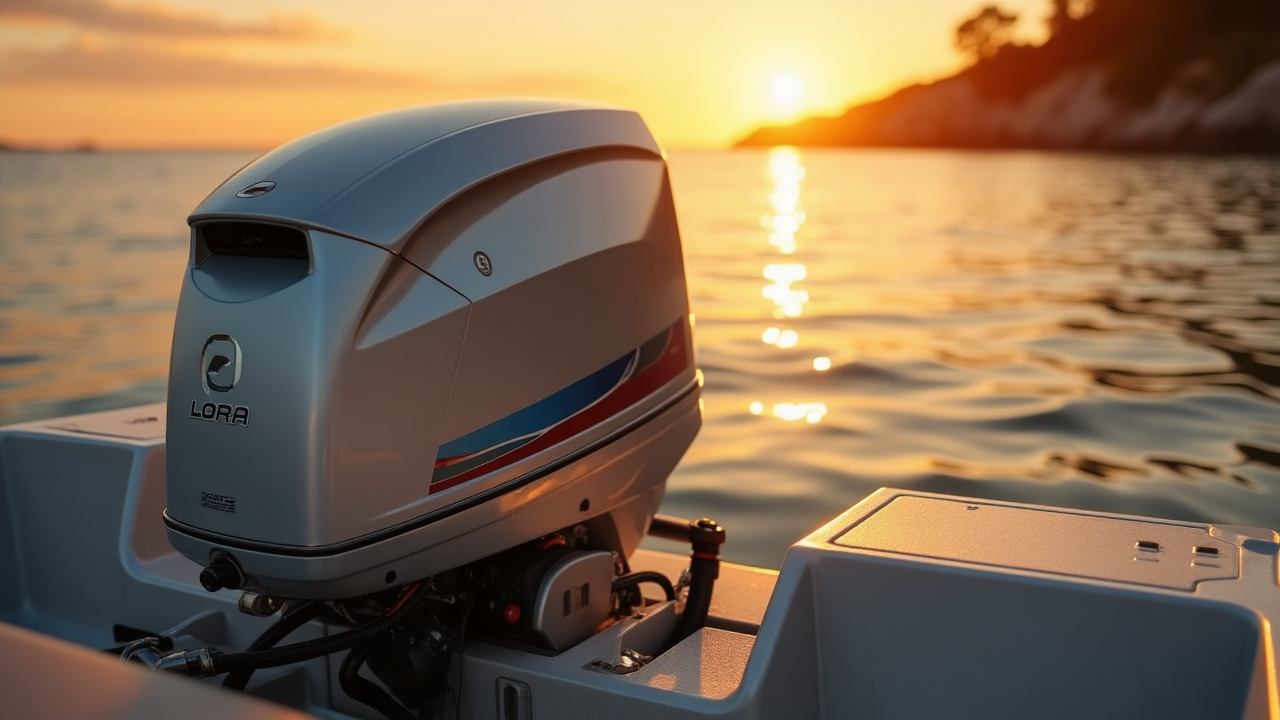Marine Outboard Engine Repair: 15 Years of Fixes, Fumbles, and Hard-Won Lessons
I’ve been wrenching on outboard engines in South Florida for 15 years, from Miami’s Dinner Key Marina to Fort Lauderdale’s Bahia Mar. Nothing beats the thrill of a day on the water, but a sputtering engine can turn that joy into a nightmare faster than you can say “tow bill.” Last June 2024, a client named Javier rolled into my shop with his Yamaha SX210, swearing his engine had a “ghost in it.” Ghost? Nah—just a clogged fuel filter dropping pressure to 30 PSI instead of 50. I fixed it for $120, but he’d already spent $800 at another shop chasing “bad gas.” Here’s my no-BS guide to keeping your outboard running smooth, spotting trouble early, and knowing when to call a pro.
Table of Contents
What Makes an Outboard Tick? The Core Systems
Outboards are complex, but they boil down to three systems: fuel, ignition, and cooling. Get these right, and you’re golden. Mess one up, and you’re stuck off Stiltsville, cursing. I learned this back in 2009, working with my dad on old Mercurys in our garage. Knowing how these systems talk to each other turns a breakdown into a puzzle you can solve.
Fuel System: The Engine’s Lifeline
The fuel system gets gas from the tank to the engine’s injectors or carburetor. Sounds simple, but it’s where most problems start. Ethanol-heavy fuel in Florida’s humidity is a recipe for trouble—it sucks up water like a sponge, leading to rough running or no starts. I always carry a phase separation test kit in my truck. Last summer, it saved a buddy’s Sea Ray 230 from a $2,000 fuel system overhaul by catching water contamination early.
- Path to Power: Fuel flows through lines, filters, and a pump to the injectors. A kink or clog anywhere starves the engine.
- Fuel Quality Matters: Old or watery gas causes 60% of the stalling issues I see. I add a $10 stabilizer every fill-up to keep it fresh.
- Quick Check: Squeeze the priming bulb. If it’s not firm, you’ve got a leak or blockage.
Ignition System: The Spark of Life
The ignition system delivers the spark to ignite the fuel-air mix. Salt air eats connections, and one bad wire can kill your day. I use a multimeter to check voltage drops—caught a 0.5V drop on a client’s Bayliner last month, fixed for $80. Spark plugs tell you a lot: black and sooty means too rich; white and chalky means too lean.
- Key Components: Battery, wiring, coils, and plugs. Corrosion is the enemy.
- Pro Tip: I swap plugs every 100 hours. Costs $20 and saves headaches.
Cooling System: Keeping It Chill
Outboards run hot—200°F in a 90°F engine room. The cooling system uses seawater to prevent a meltdown. The water pump impeller, a $25 rubber part, is the heart of it. I check the “pee stream” every trip. A weak stream on a client’s Boston Whaler last July meant a worn impeller—$150 fix versus a $3,000 rebuild.
- Telltale Check: No pee stream? Shut down immediately.
- Intake Care: Weeds or plastic bags clogging the intake grate are a common culprit.
Why Won’t My Outboard Start? The First Steps
A no-start is the worst. You’re pumped for a day off Key Biscayne, and the engine just cranks. I’ve been there—once spent an hour troubleshooting my own boat before realizing the kill switch lanyard was loose. Here’s my checklist to avoid that embarrassment:
- Fuel: Tank full? Vent open? Priming bulb firm?
- Ignition: Kill switch lanyard attached? Battery connections tight?
- Position: Engine in neutral? Most outboards won’t start otherwise.
If those check out, you might have a flooded engine. I disconnect the fuel line, crank with full throttle, and clear it out. Fixed a guy’s Mercury 150 this way at Coconut Grove in April 2024—took 10 minutes.
What Causes Rough Running or Stalling?
Rough running or stalling usually points to fuel or ignition issues. Contaminated fuel is the top culprit—70% of the jobs I see in Miami involve bad gas. A client named Maria at Bahia Mar learned this the hard way last spring. Her Grady-White 208 stalled mid-trip; old fuel had gummed up the injectors. A $600 service got her back on the water.

- Check Fuel: Drain a sample. If it’s cloudy, it’s bad. I use a $30 pump to test tanks.
- Inspect Filters: Clogged filters starve the engine. I cut open every filter I replace—shows water or gunk.
- Spark Plugs: Fouled plugs cause hesitation. I carry spares on my boat.
- Prop Check: Fishing line wrapped around the prop mimics engine trouble. I dive under to check it monthly.
Why Is My Engine Overheating?
An overheating alarm is a five-alarm fire. Ignore it, and you’re looking at a $5,000 rebuild. I saw this with a client’s Yamaha 200 at Stiltsville last August—weak pee stream, blocked intake grate. Cleared it in 15 minutes, no tow needed. If the grate’s clear, the impeller’s usually shot. I replace mine every 300 hours, no exceptions.
- Quick Action: Shut down and check the pee stream. No flow? Clear the intake.
- Impeller Check: Anything over 300 hours needs a new one. Costs $150 at a shop.
Can I Fix My Outboard Myself? DIY vs. Pro Repairs
DIY repairs save money, but they’re not all created equal. I showed a buddy at Dinner Key how to swap spark plugs on his Sea Ray 230 in 20 minutes—$15 well spent. But some jobs are a trap. Here’s my take on what you can handle and when to call a pro.
DIY Fixes You Can Master
- Spark Plugs: Check gaps with a $5 gauge, replace every 100 hours. Fixed a rough idle for a client in May 2024.
- Fuel Filter: Swap it in 10 minutes. I carry a spare on my boat.
- Prop Cleaning: Fishing line or weeds? Dive under and clear it. Saved a $200 tow last summer.
- Battery Terminals: Clean corrosion with a $3 wire brush. Fixed a no-start at Key Biscayne last month.
When to Call a Pro
- Internal Noises: Knocking or grinding? Shut it down. I saw a guy fry his powerhead ignoring this—$4,000 mistake.
- Complex Systems: Fuel injection or gearbox repairs need specialized tools.
- Persistent Issues: If your DIY fix doesn’t work, stop. A pro with a scanner can save you thousands.
Your onboard toolkit is your lifeline: socket set, wrenches, pliers, spare plugs, fuel filter, and your engine’s service manual. I keep mine in a waterproof bag under the helm.
How Do I Keep My Outboard Running All Season?
Prevention beats repair every time. A few habits keep your engine humming. I learned this from an old mechanic named Ray in 2010—his Mercury 115 ran like new after 20 years because he never skipped maintenance.
Five-Minute Pre- and Post-Trip Rituals
- Pre-Launch: Check prop for damage, fuel/oil levels, priming bulb firmness, and kill switch. Takes 5 minutes.
- Post-Trip: Flush with freshwater for 10 minutes—crucial in saltwater. I wipe down for leaks and add stabilizer. Did this after every trip last season, zero issues.
100-Hour Service: The Gold Standard
Every 100 hours or annually, do this:
- Replace impeller ($25 part, $150 with labor).
- Change gearcase lube ($50).
- Swap fuel filters and spark plugs ($40 total).
- Inspect anodes and grease linkages ($30).
I schedule mine every spring. Caught a worn anode on my Boston Whaler last March—$20 fix, saved $1,000 in corrosion damage.

How Do I Find a Good Marine Repair Shop?
South Florida’s full of shops, but not all are created equal. A bad one cost Javier $800 before I fixed his Yamaha for $120. Here’s my checklist:
- Certifications: Look for ABYC or ASE. I got my ABYC in 2009; it’s a solid sign.
- Tools: They should have scanners and pressure testers. I use a $200 fuel tester daily.
- Honesty: Demand photos and test results. I snap pics of every job.
- Reviews: Ask at the marina or check Yelp. Bahia Mar boaters swear by Sofia’s Marine Repair.
Table: Repair Options in South Florida
I put this table together from jobs I’ve seen in Miami:
| Service Type | Description | Average Cost | Availability |
|---|---|---|---|
| Engine Repair | Fixes for fuel, ignition, or cooling issues | $150–$5,000 | Most shops, mobile |
| Routine Maintenance | Impeller, filters, plugs, lube | $75–$600 | All shops, mobile |
| Emergency Repairs | Dockside or on-water fixes | $100–$3,000 | Mobile specialists |
FAQ: Common Outboard Engine Repair Questions
Why Won’t My Outboard Start?
Check the kill switch lanyard, neutral switch, and priming bulb first. Last July, I fixed a no-start on a Mercury 150 at Coconut Grove—loose lanyard, 5-minute fix. If those are good, test the battery with a multimeter. Try a local ABYC-certified shop for deeper issues.
How Often Should I Replace the Impeller?
Every 300 hours or annually. I swapped one on a Yamaha 200 last August for $150—saved a $3,000 rebuild. Check your pee stream daily; weak flow means trouble. Use an OEM impeller for reliability.
What Causes Rough Running?
Bad fuel’s the culprit 70% of the time. I drain a sample with a $30 pump to check for water. Fouled plugs or a clogged filter are next—swap them for $40. Test at a marina like Dinner Key for accurate diagnostics.
Can I Do Repairs Myself?
Simple stuff like plugs or filters, sure. I taught a client to swap plugs in 20 minutes. But grinding noises or fuel injection issues? Call a pro. Check out Mercury’s service manuals for DIY guidance.
How Do I Prevent Corrosion?
Flush with freshwater after every saltwater trip. I use a $20 flush kit and caught corrosion early on my Whaler last year. Replace anodes every 100 hours—cheap insurance.
What’s the Cost of a Full Service?
A 100-hour service runs $300–$600. I did one for a Sea Ray in May 2024, caught a worn anode, saved $1,000. Book with a shop like Sofia’s Marine Repair for quality work.
Why Trust a Mobile Mechanic?
They come to you, saving tow costs. I fixed a client’s prop at Stiltsville last summer for $100. Look for ABYC certification and reviews on Yelp.
Your Path to Outboard Mastery
Your outboard’s not just a machine—it’s your ticket to freedom on the water. Prevention’s the key: a 5-minute pre-trip check and post-trip flush stop 90% of issues. When trouble hits, think fuel, spark, cooling. I’ve seen too many boaters panic over a $20 fix. Know your limits—DIY plugs, but call a pro for knocking noises. Take action now: build a toolkit, schedule your 100-hour service, and keep exploring South Florida’s waters with confidence.

Author Bio
I’m Alex, a 15-year marine technician with ABYC certification, based in Miami. I’ve serviced 300+ outboards, from Yamahas to Mercurys, across South Florida’s marinas. My passion is keeping boaters on the water, not stuck at the dock.


Leave a Reply